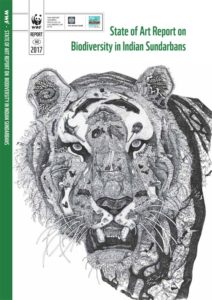State of the Art Report on Biodiversity in Indian Sundarbans
WWF-India has compiled a sweeping study of the rich, yet highly threatened, biodiversity in the world's largest mangrove ecosystem -- the Indian Sundarbans.
This novel report is a tool to help balance the human and ecological needs of this spectacular ecosystem.
The Sundarbans forest is the planet’s largest mangrove forest ecosystem. It straddles the border between India and Bangladesh, spreading over 10,000 square kilometers along the Bay of Bengal. Threatened and endangered wildlife – like the Bengal tiger, Irrawady river dolphin, finless porpoise, and estuarine crocodile – live here. It is also a nursery for 90% of the aquatic species on the East coast of India and serves as a bio-shield for the fierce waves and winds of coastal storms. And now we have a better understanding of biodiversity in the region.
A new report from WWF-India, with support from the World Bank, reveals how important the ecosystem is for South Asia’s fantastic biodiversity. The report’s comprehensive baseline of biodiversity in the Indian Sundarbans is the first of its kind and provides a critical evaluation of the current state of biodiversity in the area.
Like the mighty rivers that meet in the Sundarbans, the area is also a confluence of many pressing environmental threats: population growth, habitat destruction, and climate change. Rising sea levels and expanding human communities press in on the Sundarbans from all sides, threatening the future of the forest’s biodiversity and ecological services.  Amidst these pressures, however, there are major opportunities for sustainable development that incorporate healthy mangrove and delta ecosystems.
Amidst these pressures, however, there are major opportunities for sustainable development that incorporate healthy mangrove and delta ecosystems.
State of the Art Report on Biodiversity in Indian Sundarbans combines its detailed biological assessment with a set of policy recommendations and can serve as a tool for decision-makers in the governments of India, West Bengal, and the People’s Republic of Bangladesh to identify and prioritize options for addressing these threats and securing the future of the Sundarbans.
For more information, please contact Vinod Malayilethu.